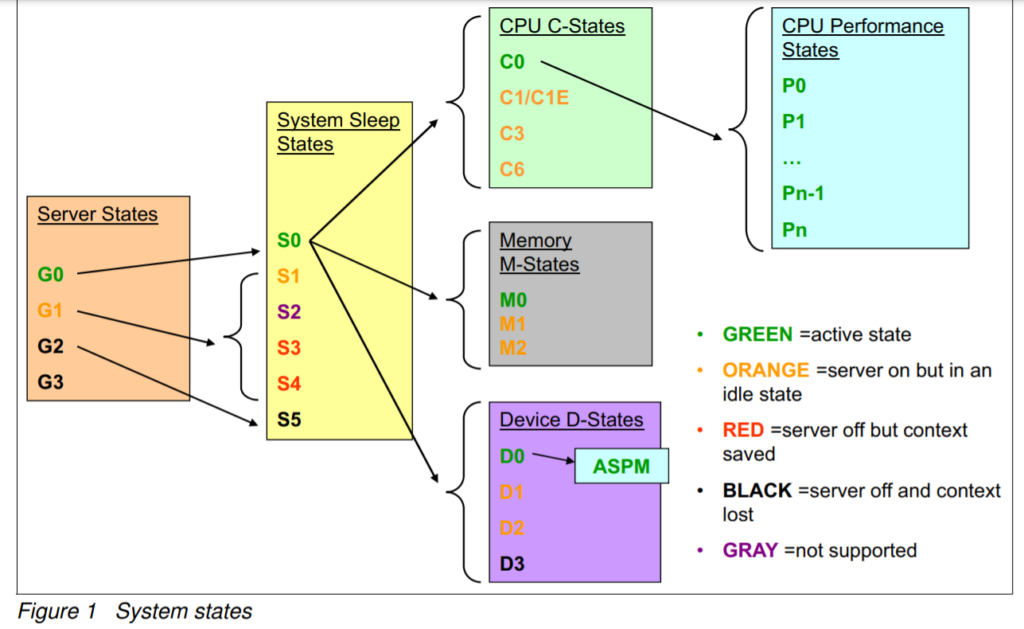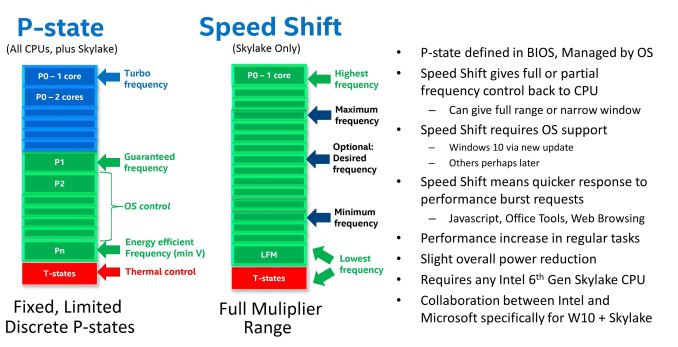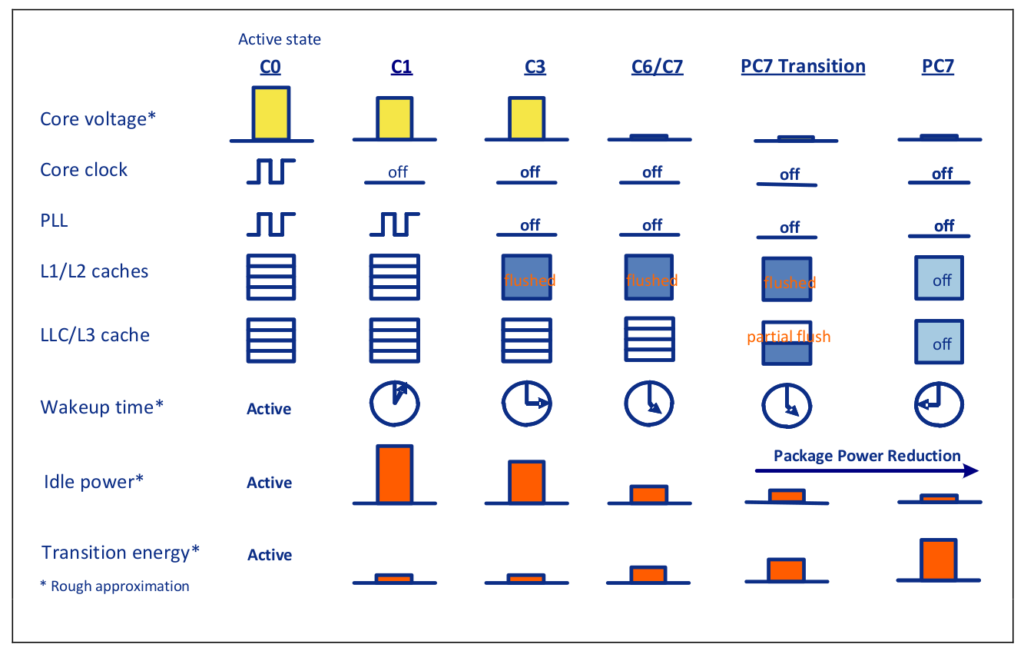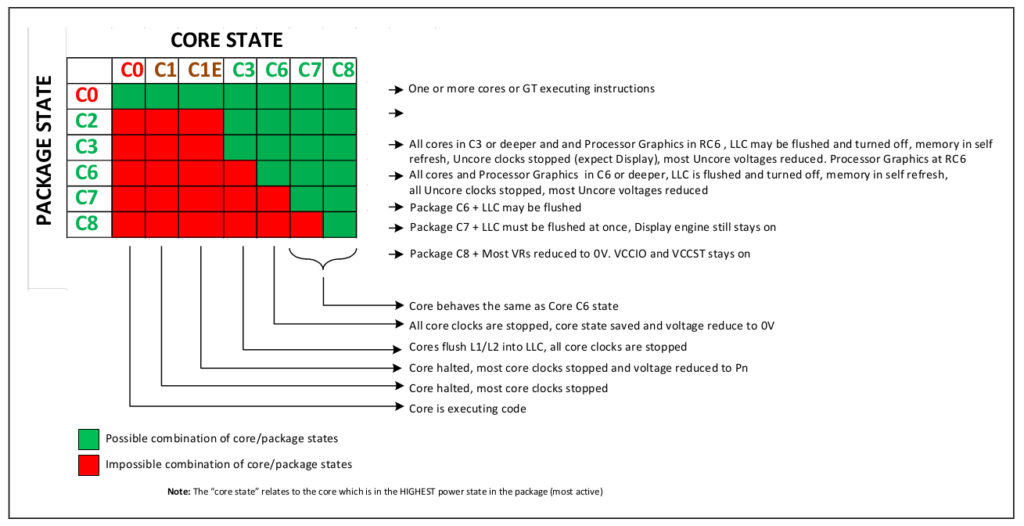Processor power management technologies are defined in the ACPI specification and are divided into two categories or states:【参考1】
- Power performance states (ACPI P states)P-states provide a way to scale the frequency and voltage at which the processor runs so as to reduce the power consumption of the CPU. The number of available P-states can be different for each model of CPU, even those from the same family.
- Processor idle sleep states (ACPI C states)C-states are states when the CPU has reduced or turned off selected functions. Different processors support different numbers of C-states in which various parts of the CPU are turned off. To better understand the C-states that are supported and exposed, contact the CPU vendor. Generally, higher C-states turn off more parts of the CPU, which significantly reduce power consumption. Processors may have deeper C-states that are not exposed to the operating system.
简单的说, P-states 是 CPU 醒着的时候降低功耗(好比上班摸鱼,玩玩手机放松一下,但是随时都是醒着的),C-states 就是CPU 睡着了。
从下面的示意图可以看的更清晰




更多推荐的资料:
https://www.cnblogs.com/apnpc/p/13780146.html 【CPU】 C-State, C-模式 是什么?
https://zhuanlan.zhihu.com/p/25675639 CPU省电的秘密(二):CStates
参考:
1.https://docs.microsoft.com/en-us/previous-versions/windows/desktop/xperf/p-states-and-c-states
2.https://lenovopress.com/lp0632.pdf
3.https://www.thomas-krenn.com/en/wiki/Processor_P-states_and_C-states